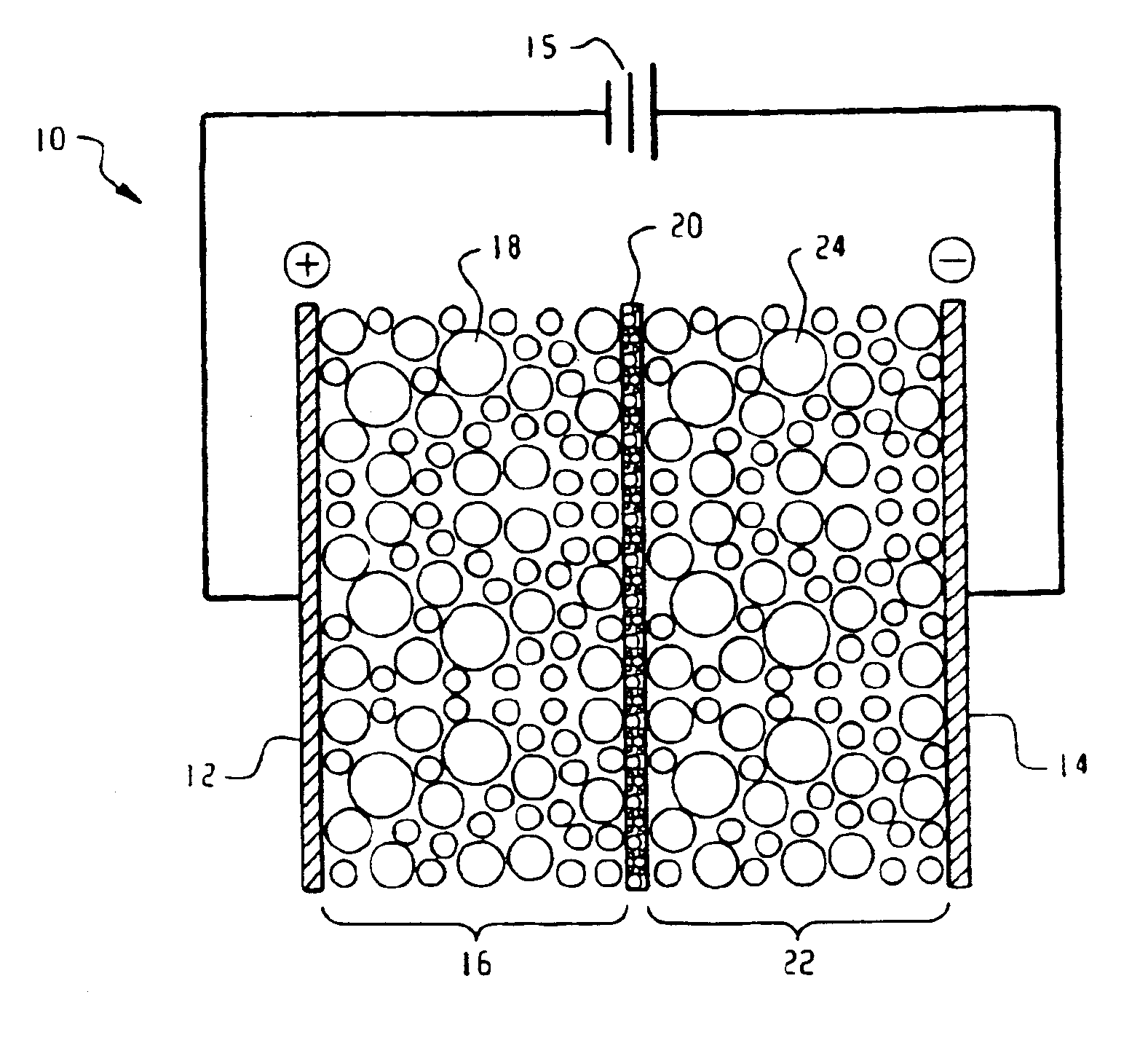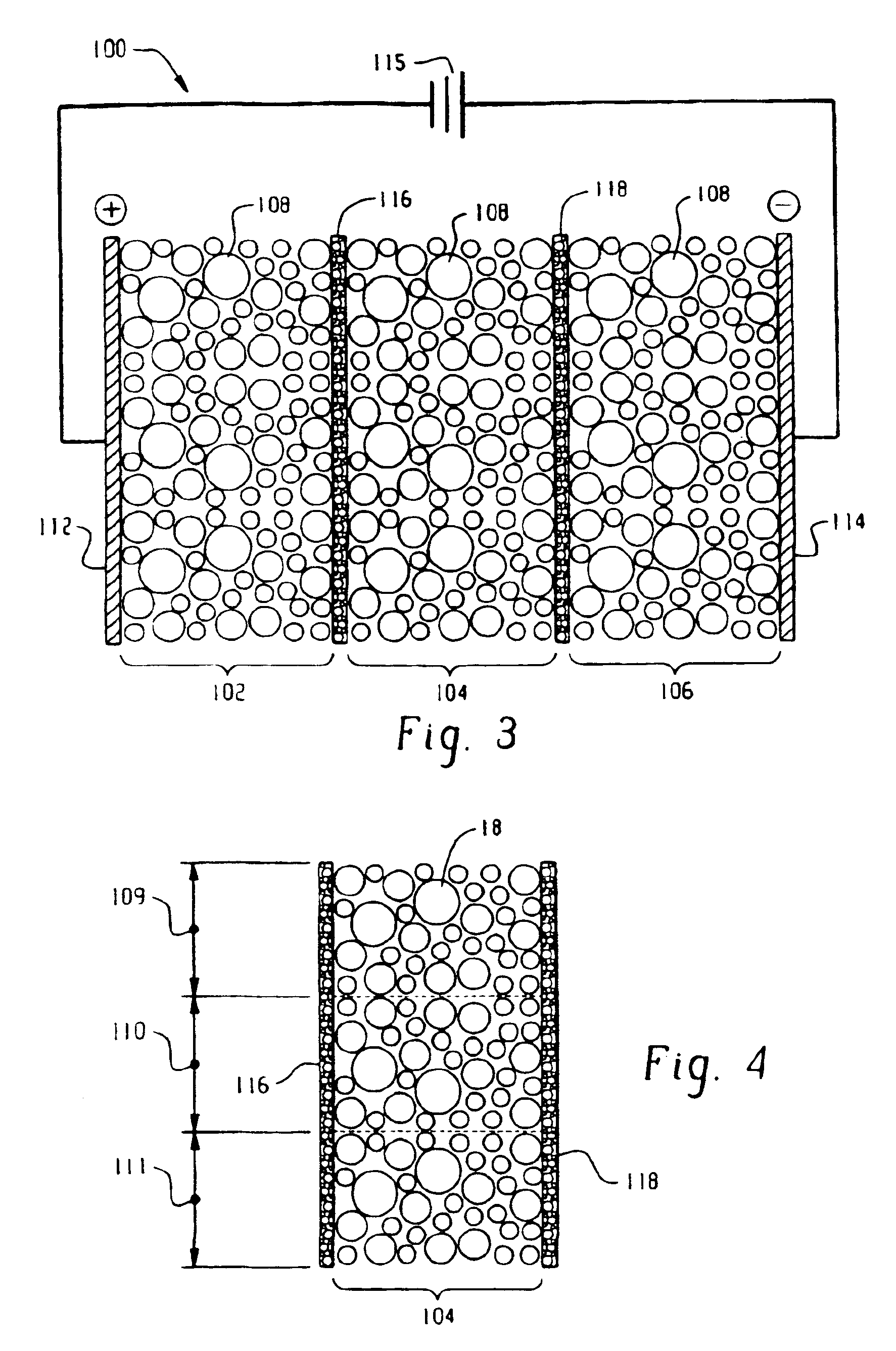Electrolytic process and apparatus
a technology of electrolysis and process, applied in the field of electrolysis, can solve the problems of short shelf life, unstable chlorine dioxide solution, and inability to be commercially availabl
- Summary
- Abstract
- Description
- Claims
- Application Information
AI Technical Summary
Benefits of technology
Problems solved by technology
Method used
Image
Examples
example 1
In this example, a ceramic catalyst material was prepared as follows. A metal oxide precursor solution was prepared by admixing 0.85 grams tetraamineplatinum (II) chloride, 41 ml of 91% isopropyl alcohol, 0.83 ml of 30% ammonium hydroxide and 26 ml of deionized water. The precursor solution was used twice to coat 100 milliliters of MACROLITE ML-20 / 40 that had been backwashed and air dried for about 12 hours. After each coating, the resin was baked at 550° C. for 30 minutes.
example 2
In this example, a ceramic catalyst material was prepared as follows. A metal oxide precursor solution was prepared by admixing 0.85 grams tetraamineplatinum (II) chloride. 41 ml of 91% isopropyl alcohol, 0.83 ml of 30% ammonium hydroxide and 26 ml of deionized water. The precursor solution was used twice to coat 100 milliliters of SIR-600 resin commercially available from ResinTech, Inc. that had been backwashed and air-dried for about 12 hours. After each coating, the resin was baked at 550° C. for 30 minutes.
example 3
In this example, electrochemical reactor cassettes were configured as described in FIGS. 4 and 5. The electrode compartments contained SK116 cation exchange resin commercially available from Mitsubishi Chemical. The central compartment contained a particulate material bed of three equal layers. The first layer consisted of SK116 cation exchange resin; the second layer consisted of equal amounts by weight of the SK116 cation exchange resin and the catalyst material; and the third layer consisted of the catalyst material. The catalyst material was prepared in accordance with Examples 1. An overview of the cassette components is shown in Table I.
[t3]
TABLE IAnodeDSA, flat sheetCathode316L stainless steel, flat sheetElectrode Area155 cm2Membrane Area155 cm2Inter Membrane Spacing1.27 cmCatalystPt impregnated (Example 1)Cation Exchange ResinSK116 (Mitsubishi Chemical)Cation Exchange MembraneCM1-7000 (Membranes International,Inc.)
Four cassettes containing the ceramic catalyst material were ...
PUM
| Property | Measurement | Unit |
|---|---|---|
| size | aaaaa | aaaaa |
| size | aaaaa | aaaaa |
| size | aaaaa | aaaaa |
Abstract
Description
Claims
Application Information
 Login to View More
Login to View More - R&D
- Intellectual Property
- Life Sciences
- Materials
- Tech Scout
- Unparalleled Data Quality
- Higher Quality Content
- 60% Fewer Hallucinations
Browse by: Latest US Patents, China's latest patents, Technical Efficacy Thesaurus, Application Domain, Technology Topic, Popular Technical Reports.
© 2025 PatSnap. All rights reserved.Legal|Privacy policy|Modern Slavery Act Transparency Statement|Sitemap|About US| Contact US: help@patsnap.com



